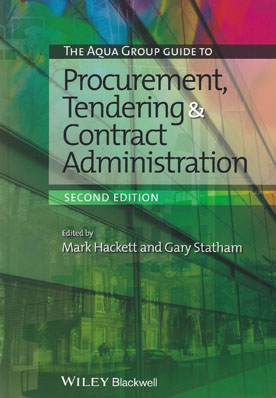We will be closed from 5pm Thursday 17th April for the Easter Bank Holidays, re-opening at 8.30am on Tuesday 22nd April. Any orders placed during this period will be processed when we re-open.

This authoritative guide gives a detailed account of the building team's roles and responsibilities, with best industry practice required to ensure that building projects meet clients' expectations on time, cost and quality.
The period from starting a college course to successful completion of professional examinations represents a long and steep learning curve. The range of skills and the knowledge required to perform work efficiently and effectively might, at first, seem rather daunting. This guide will provide you with sufficient understanding and hold you in good stead for your early years in professional practice.
The Aqua Group Guide to Procurement, Tendering and Contract Administration is the merging of three established textbooks written by the Aqua Group - a highly respected group of architects and quantity surveyors. It has been edited, enlarged and updated into a single volume by Davis Langdon and now covers the entire building process from inception through to final account.
With clear and thorough explanations by practising professionals from this distinguished practice, you are taken through self-contained chapters covering the detail of the briefing stage, procurement methods, tendering procedures, and contract administration.
Throughout, the emphasis is on current best practice and the book draws from the widely used Joint Contracts Tribunal (JCT) series of contracts.